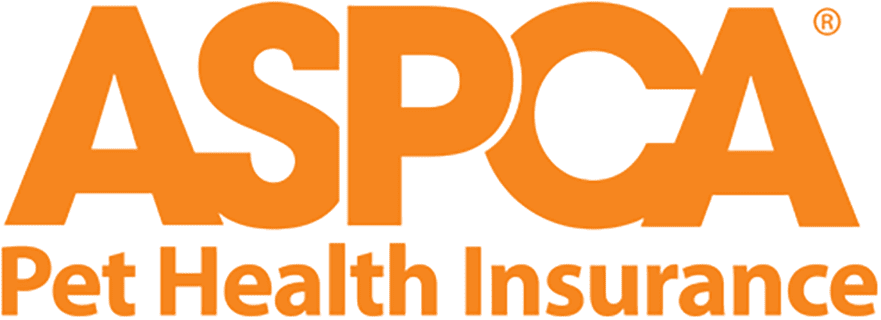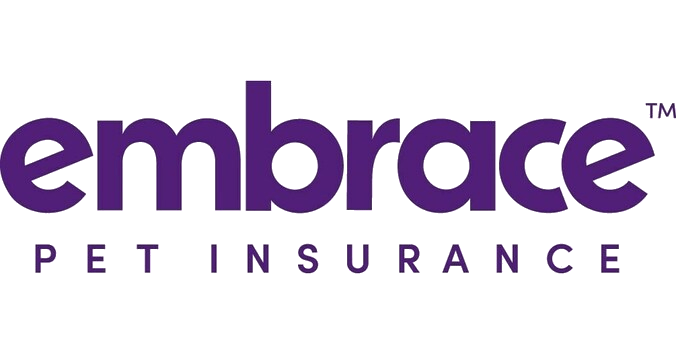The best pet insurance companies at a glance
All of the pet insurance companies below scored 5 out of 5 stars based on an in-depth comparison of coverage, plan terms and options, consumer experience, financial strength and discounts:
-
ASPCA: Best for broad coverage.
-
Embrace: Best for many ways to save.
-
Figo: Best pet insurance for cats.
-
MetLife: Best pet insurance for dogs.
-
Spot: Best for straightforward waiting periods.
Why you can trust NerdWallet
Our writers and editors follow strict editorial guidelines to ensure the content on our website is accurate and fair, so you can make financial decisions with confidence and choose the products that work best for you.
2,100+ data points analyzed 800+ quotes collected
800+ quotes collected 20+ pet insurers evaluated
20+ pet insurers evaluated
The best pet insurance companies of 2024
We evaluated pet insurers across the country to find the ones with the best combination of coverage, financial strength, consumer experience and plan options. Below are the ones we consider to be the best pet insurance companies in the U.S.
ASPCA: Best pet insurance for broad coverage
 NerdWallet rating
NerdWallet rating
NerdWallet’s ratings are determined by our editorial team. The scoring formula takes into account consumer complaint and customer satisfaction data.
5.0
/5 Unlimited 70%, 80%, 90% $100, $250, $500
Broader coverage than most other plans.
- Covers horses in addition to cats and dogs.
- Standard plans cover alternative therapies, behavioral issues and congenital conditions.
- Shorter waiting period than most plans for cruciate injuries (14 days).
- You must call rather than getting an online quote if you’re interested in unlimited annual coverage.
ASPCA offers generous coverage and multiple plan options, including an accident-only policy.
You name it, and ASPCA pet insurance probably covers it — including dental illnesses, behavioral issues, alternative treatments, prescription food and even microchipping. Unlike some other pet insurers, it also includes coverage for accident or illness exam fees.
If you want less coverage and a lower rate, you can opt for an accident-only policy. If you want even more coverage, you can add a preventive care plan to pay for services like dental cleaning, heartworm tests and vaccinations.
The company offers pet insurance not only for dogs and cats but also for horses.
-
Age restrictions: There’s no maximum age for enrollment, but pets must be at least 8 weeks old.
-
Plans available: Accident and illness, accident-only, wellness.
-
Waiting periods: 14 days for accident and illness coverage. Coverage for preventive plans starts immediately.
Below are monthly rates for accident and illness coverage for two sample pets.
|
Source: Insurer website. Each plan had a $250 deductible, $5,000 in annual coverage and an 80% reimbursement rate. |
||
Embrace: Best pet insurance for many ways to save
 NerdWallet rating
NerdWallet rating
NerdWallet’s ratings are determined by our editorial team. The scoring formula takes into account consumer complaint and customer satisfaction data.
5.0
/5 Unlimited 70%, 80%, 90% $100 – $1,000
Many ways to save on your policy.
- Covers curable pre-existing conditions.
- Many ways to customize your plan.
- Orthopedic waiting period can be reduced with a vet exam.
- Doesn’t cover prescription food or supplements unless you buy a wellness plan.
Embrace has many ways to customize your plan, plus coverage for curable pre-existing conditions.
Embrace offers its customers many ways to save. You’ll automatically get a 10% discount when you insure more than one pet. Active military members and veterans can get a 5% discount in every state but New York and Tennessee. The company is currently working on rolling out a healthy pet discount, too.
Embrace has a wide range of deductibles and annual coverage limits to choose from. Its standard accident and illness plan includes chiropractic care, acupuncture, physiotherapy and other alternative therapies. It also pays exam fees for covered conditions and reimburses for behavioral treatments as long as a vet provides them.
-
Age restrictions: The minimum age is 6 weeks. Pets up to age 14 are eligible for accident and illness coverage, which can be maintained throughout their lives. If you’re enrolling a pet for the first time at age 15 or above, it’s eligible only for accident coverage.
-
Plans available: Accident and illness, accident-only, wellness.
-
Waiting periods: Embrace waiting periods are 48 hours for accidents and 14 days for illnesses. There’s also typically a 180-day waiting period before Embrace will cover a dog’s orthopedic injuries, but you can reduce that to 14 days with a vet exam.
Below are monthly rates for accident and illness coverage for two sample pets.
|
Source: Insurer website. Each plan had a $250 deductible, $5,000 in annual coverage and an 80% reimbursement rate. |
||
Figo: Best pet insurance for cats
 NerdWallet rating
NerdWallet rating
NerdWallet’s ratings are determined by our editorial team. The scoring formula takes into account consumer complaint and customer satisfaction data.
5.0
/5 Unlimited 70%, 80%, 90%, 100% $100 – $1,500
Mobile app has lots of useful features.
- No upper age limit for pets.
- Unlimited annual coverage is available.
- Several reimbursement options to choose from, including 100% reimbursement for some pets.
- Doesn’t offer an accident-only plan, which is typically cheaper than more comprehensive plans.
Figo offers extensive coverage, a variety of deductibles to choose from and generous reimbursement options.
Figo offered some of the most consistently affordable cat insurance rates when NerdWallet gathered sample quotes from more than a dozen pet insurers. If you’re looking to minimize out-of-pocket expenses when your kitty goes to the vet, consider Figo’s 100% reimbursement option. Select that, and as soon as you hit your deductible, Figo will pay you back for all vet costs, up to your annual limit.
Figo offers an accident and illness plan with three different annual reimbursement maximums ranging from $5,000 to unlimited. Figo’s coverage is comprehensive, including nonroutine dental care, alternative treatments and hereditary conditions. Then you can add even more options such as wellness care and coverage for veterinary exam fees.
Figo isn’t the only pet insurer with a mobile app, but you can use its Pet Cloud for more than simply filing claims and paying bills. You can also organize your pet’s medical records, live chat with a veterinarian and meet other pet parents.
-
Age restrictions: The minimum age for coverage is 8 weeks. There’s no maximum age limit.
-
Plans available: Accident and illness, wellness.
-
Waiting periods: One day for accidents, 14 days for illnesses and six months for canine orthopedic injuries. You may be able to have the orthopedic waiting period waived with a vet exam.
Below are monthly rates for accident and illness coverage for two sample pets.
|
Source: Insurer website. Each plan had a $250 deductible, $5,000 in annual coverage and an 80% reimbursement rate. |
||
MetLife: Best pet insurance for dogs
 NerdWallet rating
NerdWallet rating
NerdWallet’s ratings are determined by our editorial team. The scoring formula takes into account consumer complaint and customer satisfaction data.
5.0
/5 Unlimited 50% – 90% $0 – $2,500
No age restrictions for enrollment.
- Deductible goes down each year you don’t make a claim in some states.
- Accident coverage starts right away, with no waiting period.
- Includes coverage for holistic and alternative care.
- No option to have the company pay your vet directly.
MetLife sells customizable plans for dogs, cats and even other animals in some states.
Among our highest-rated companies, NerdWallet found the lowest sample rates for dogs from MetLife across a variety of ages, breeds and locations. The company also stands out because it doesn’t have an extended waiting period before it’ll pay to treat orthopedic issues for dogs. (Some insurers won’t cover knee injuries or other orthopedic problems for the first six months of your policy.)
MetLife offers an array of ways to save on your policy, depending on where you live and work. First responders, health care workers, veterans, current members of the military and staff at animal care facilities may all be eligible for a discount. You may also save on your policy if your employer offers MetLife pet insurance as a benefit.
MetLife’s website is generally user-friendly and offers a sample policy so you can preview the coverage terms before you buy.
-
Plans available: Accident and illness, wellness.
-
Waiting periods: Accident and wellness coverage take effect immediately. There’s a 14-day waiting period for illness coverage.
Below are monthly rates for accident and illness coverage for two sample pets.
|
Source: Insurer website. Each plan had a $250 deductible, $5,000 in annual coverage and an 80% reimbursement rate. |
||
Nationwide: Best pet insurance for exotic pets
 NerdWallet rating
NerdWallet rating
NerdWallet’s ratings are determined by our editorial team. The scoring formula takes into account consumer complaint and customer satisfaction data.
5.0
/5 Unlimited 50% – 90% $100, $250, $500
Covers dogs, cats, birds, rabbits and other pets.
- Gives discounts for multiple pets or more than one policy with Nationwide.
- Modular plan offers customizable coverage.
- Has a 24/7 vet helpline for policyholders.
- Not all plans and coverage options are available online.
- Can’t combine wellness coverage with Whole Pet plan.
- 12-month waiting period for cruciate ligament injuries in most states.
Nationwide can cover a wide range of accidents and illnesses, but some plan options are available only by phone.
While most companies insure only dogs and cats, Nationwide’s exotic pet plan can cover just about any of your furry, feathered or scaly friends. You’ll have to call to get it though, as online quotes are available only for cats and dogs.
Nationwide has three main plans. Whole Pet covers a range of accidents and illnesses, including hereditary conditions, and reimburses a percentage of your vet bills — up to your annual limit. Major Medical offers less comprehensive coverage and pays a set amount for each condition, regardless of what your vet charges you. The Modular plan allows you to mix and match different types of coverage.
You can supplement your Modular or Major Medical plan with wellness coverage or buy a wellness plan on its own. Wellness plans aren’t available in all states or with Whole Pet.
-
Age restrictions: Depending on the plan, the minimum age may be 8 weeks and the maximum age may be 8 or 9 years. Some plans have no minimum or maximum age.
-
Plans available: Accident and illness, wellness.
-
Waiting periods: Vary by plan. A 14-day waiting period may apply, with a 12-month waiting period for cruciate ligament coverage.
Below are monthly rates for accident and illness coverage for two sample pets.
|
*8-year-old pets were offered accident-only coverage. |
||
|
Source: Insurer website. Each plan had a $250 deductible, $5,000 in annual coverage and an 80% reimbursement rate. |
||
Pets Best: Best pet insurance for flexible plans
 NerdWallet rating
NerdWallet rating
NerdWallet’s ratings are determined by our editorial team. The scoring formula takes into account consumer complaint and customer satisfaction data.
5.0
/5 Unlimited 70%, 80%, 90% $50 – $1,000
May be able to reimburse your vet directly.
- Lots of options to customize plans.
- Unlimited annual coverage option available.
- No upper age limit for enrollment.
- Includes exam fees and certain therapies only with more expensive plans.
- Doesn’t cover food or supplements.
Pets Best offers lots of options, plus the ability to pay your vet directly.
If you’re looking for plenty of ways to customize your coverage and price, Pets Best may be a good option. The company has three tiers of accident and illness coverage, plus two wellness add-ons and an accident-only plan. That increases your chances of finding insurance that fits your needs and budget.
For larger expenses, such as surgeries, you can work with Pets Best to pay your vet directly so you don’t have to pay as much upfront.
-
Age restrictions: The minimum age is 7 weeks, with no upper age limit.
-
Plans available: Accident and illness, accident-only, wellness.
-
Waiting periods: In most states, the waiting periods are three days for accidents, 14 days for illnesses and six months for cruciate ligament issues.
Below are monthly rates for accident and illness coverage for two sample pets.
|
Source: Insurer website. Each plan had a $250 deductible, $5,000 in annual coverage and an 80% reimbursement rate. |
||
Spot: Best pet insurance for straightforward waiting periods
 NerdWallet rating
NerdWallet rating
NerdWallet’s ratings are determined by our editorial team. The scoring formula takes into account consumer complaint and customer satisfaction data.
5.0
/5 Unlimited 70%, 80%, 90% $100 – $1,000
Broad coverage, including microchip implantation.
- Covers things some insurers don’t, such as prescription food and behavioral modification.
- Covers some pre-existing conditions if they have been cured and treatment-free for 180 days.
- Unlimited annual coverage option available.
- Doesn’t offer the option to pay your vet directly.
Spot offers a wide range of coverage choices for pet owners but won’t pay your vet directly.
Spot’s pet insurance plans are comprehensive, covering alternative treatments, behavioral therapies, dental illness, microchip implantation and diets prescribed to treat a covered condition.
The company offers a variety of ways to customize your policy, including many annual coverage limits to choose from. There’s even an unlimited option. The company also offers a 10% multipet discount.
-
Age restrictions: The minimum age is 8 weeks. There’s no upper age limit.
-
Plans available: Accident and illness, accident-only, wellness.
-
Waiting periods: The waiting period is 14 days for everything, including both accidents and illnesses, with no exception for cruciate ligament issues.
Below are monthly rates for accident and illness coverage for two sample pets.
|
Source: Insurer website. Each plan had a $250 deductible, $5,000 in annual coverage and an 80% reimbursement rate. |
||
Compare the best pet insurance companies
Still can’t decide which insurer is right for you? Check out how our best pet insurance companies compare at a glance.
Plans available
Below are the plans each company offers.
What’s covered
Certain companies include coverage that others charge extra for — or don’t offer at all.
Waiting periods
A waiting period is the time between when you buy your policy and when coverage takes effect.
|
48 hours for accidents, 14 days for illnesses. For dogs, six months for orthopedic conditions. |
|
|
One day for accidents, 14 days for illnesses. For dogs, six months for orthopedic injuries. |
|
|
None for accidents, 14 days for illnesses. |
|
|
Waiting periods vary by plan. A 12-month waiting period applies to cruciate ligament injuries in most states. |
|
|
Three days for accidents, 14 days for illnesses and six months for cruciate ligament issues. |
|
|
Waiting periods may vary by state. |
|
How much is pet insurance?
Pet insurance for dogs costs about $676 per year, while cat insurance costs about $383 per year, on average, according to the North American Pet Health Insurance Association[0]. That works out to about $56 a month for a dog and $32 a month for a cat.
Did you know…
The average cost of dog insurance has gone up by more than 5% since last year, according to NAPHIA’s data. Cat insurance has decreased by almost 1%.
The averages above are for accident and illness coverage, the most common type of plan. Accident-only policies are significantly cheaper, at $204 per year for dogs and $116 per year for cats. On a monthly basis, that’s roughly $17 for a dog and $10 for a cat. However, an accident-only plan won’t pay for conditions such as cancer, allergies or urinary tract infections.
Your own pet’s price will vary depending on factors such as:
-
Where you live. Pet insurance companies take the cost of vet care in your area into account when pricing your policy.
-
Your pet’s age. Because older animals are more likely to have health problems, their premiums are generally higher.
-
Your pet’s breed. Certain breeds are more prone to health issues. For example, bulldogs and Boston terriers often develop breathing problems, while German shepherds and other large breeds are more likely than others to get hip dysplasia. These potential problems may be reflected in the cost of your pet insurance plan.
-
Your deductibles, coinsurance and coverage limits. The less you’re willing to pay out of pocket for your pet’s care, the higher your pet insurance premium will be. For instance, choosing a $100 deductible instead of a $500 one means your plan will start reimbursing you sooner for your pet’s care — but it’ll cost you more in premiums.
How to find the best dog insurance
Most animals with pet insurance are dogs — more than 78%, according to NAPHIA[0] — so there’s not much difference between the best dog insurance companies and the best pet insurance companies overall. But if you’re looking for the right plan for your pup, here are a few things to keep in mind.
Conditions common to your dog’s breed
Many breeds are susceptible to certain health conditions, so it’s a good idea to make sure the plan you’re considering will cover them and check whether any waiting periods apply.
For example, some small breeds like miniature schnauzers and Yorkshire terriers may be more likely to develop bladder stones, which could require a prescription diet to help manage. Many pet insurers won’t reimburse you for prescription food, but companies like Spot and Trupanion will.
Breeds such as German shepherds and Labrador retrievers are prone to hip dysplasia, a hereditary problem with the hip joints. Most pet insurers cover hip dysplasia as long as your dog wasn’t diagnosed prior to the start of your policy. But Healthy Paws won’t pay to treat this condition for the first 12 months of your policy, and won’t cover it at all if you enroll your pet at age 6 and up.
Your dog’s energy and activities
A dog that spends a lot of time running, jumping, fetching and wrestling with buddies at the dog park might be more prone to accidental injuries than one whose only exercise is a leisurely morning walk. If your pup is on the active side, consider a plan that covers physical and other rehabilitative therapies in case your furry pal overdoes it and needs surgery.
Wellness expenses
Between vaccinations, flea/tick preventives, heartworm screening and annual blood work, your dog’s wellness care costs can add up. If you’re interested in having a pet insurance company help you with these expenses, research which insurers offer wellness plans and how much they cost.
It’s important to do the math. If you don’t use all the covered services in a given year, you may end up paying more for the wellness coverage than you get back.
How to find the best cat insurance
Cats make up a small but growing part of the pet insurance market. Here’s what to consider when choosing a cat insurance policy.
Decide whether your cat needs insurance
Research has shown that cats go to the vet less often than dogs and therefore rack up smaller medical bills. In fact, nearly a quarter of cat owners spend nothing at all on vet care for their pets in a given year, according to a study published in 2020[0]. If your cat has relatively few health problems throughout its life, pet insurance might not be worth it.
The flip side is that pet insurance for cats is less expensive, too. For some cat owners, having coverage can offer peace of mind and a safety net in case of a pricey diagnosis.
Buying pet insurance may be a wise idea if your cat spends any time outdoors, which can lead to a higher risk of disease, parasites and injury.
Wellness expenses
Vets generally recommend annual checkups for healthy adult cats, with more frequent visits for kittens and seniors. Wellness plans, which many pet insurers offer as add-ons, can help you pay for the exam fee plus vaccinations and screenings. But make sure you’ll use all the benefits, or you could end up paying more for the coverage than you get out of it.

How to compare pet insurance companies
The costs and types of pet insurance plans vary by company, so consider options from several providers before choosing. Here are some tips for buying pet insurance.
1. Check whether your pet is eligible
Puppies and kittens often must be a minimum of 6 to 10 weeks old to be insured, depending on the company. Senior pets may not be eligible for first-time enrollment with some companies, or they may qualify for accident coverage only. Once the pet is enrolled, though, most plans will offer coverage for life as long as you continue paying the premiums.
2. Research what’s covered
Pet insurance plans typically cover expenses like surgery, hospitalization and medication if your pet gets sick or hurt. However, there are certain things that some companies charge extra for or won’t cover at all. Here are a few examples:
-
Exam fees. Say your dog breaks her leg. Some plans will reimburse expenses like X-rays, surgery and pain medication, but not the vet’s exam fee.
-
Alternative treatments and rehabilitation. Some companies include coverage for things like acupuncture and physical therapy in their standard plans. Others charge extra.
-
Behavioral therapies. Not all policies cover veterinary treatment for aggression or other behavioral issues.
-
Prescription food. Certain plans won’t cover food or supplements at all, even if your vet prescribes them for a covered condition.
-
Dental care. Pet insurance plans vary widely when it comes to caring for your pet’s teeth. For example, your policy may not cover dental illnesses such as gingivitis or periodontal disease. Alternatively, it may cover them only if your pet has had a recent tooth cleaning. Some add-on wellness plans pay for cleanings.
Note that pet insurance policies usually won’t cover pre-existing conditions, cosmetic procedures or breeding expenses. For more information, see our guide to pet insurance coverage.
Did you know…
Many pet insurance plans will cover “curable” pre-existing conditions that haven’t shown any symptoms for a set period of time.
3. Decide how much coverage you want
Most pet insurance plans cap the amount they pay out per year, although some have no annual limit. Only you can decide the amount that gives you reasonable peace of mind for paying vet bills.
If your dog or cat is relatively healthy, you might go years without paying for anything but routine care. But an unexpected surgery or serious illness could add up to thousands of dollars in expenses.
4. Understand reimbursements and deductibles
Most cat and dog insurance plans reimburse you for a percentage of your vet bill. You can generally choose a reimbursement level — such as 70%, 80% or 90% — when you buy the plan.
Other plans pay what the insurance company deems a standard fee for a given treatment, which might be less than what your vet charges. You’d be responsible for the remainder.
Most plans also have a deductible — the dollar amount you pay out of pocket before the policy pays. You can usually choose from a range of deductibles, such as $100, $250 or more. Some plans apply deductibles to each injury or illness that’s treated. Most have you pay the deductible every year.
Generally, the lower your out-of-pocket costs are, the more you’ll pay for coverage. A lower deductible and higher reimbursement rate can lead to a higher premium, while a higher deductible and lower reimbursement rate can mean a lower premium.
5. Check waiting periods
Most plans include short waiting periods after you purchase the policy for general accident and illness coverage, such as 14 days. Your plan won’t pay for any treatment during the waiting period.
Some plans include longer waiting periods for coverage of certain conditions, such as cruciate ligament injuries — a common orthopedic problem for dogs. The cruciate ligaments help stabilize the knee; when injured, it can make it difficult for a dog to walk.
Some pet insurance companies offer coverage for routine services such as well visits and vaccinations. While this may sound tempting, do the math to determine whether it’s worth the extra cost. Compare the annual price of the wellness insurance plan with the amount you’d pay each year on your own for services the plan covers. Read the details, because the items covered for “wellness” vary by pet insurance company.
Did you know…
Some wellness plans will pay up to a set amount toward the cost of spay or neuter surgery.
7. Compare quotes
The cost of insurance for dogs and cats varies by carrier and the amount of coverage. Some pet insurers offer discounts; you might be able to save money by insuring more than one pet, for example. But a discount doesn’t guarantee the plan is the best deal.
The only way to find the best insurance for your pet is to dig into the details and get pet insurance quotes for several plans. Make sure you’re making a fair comparison, with similar coverage amounts, deductibles and reimbursement limits.
Understand the plan before you buy, so when your beloved pet is sick as a dog, you will know what the insurance covers and won’t be taken by surprise.
How we ranked the best pet insurance companies
NerdWallet’s rating system rewards companies with broad coverage, a variety of ways to customize your plan, a high financial strength rating and a good customer experience. To calculate each insurer’s rating, we adjusted the scores to a curved 5-point scale.
These ratings are a guide, but we encourage you to shop around and compare several pet insurance quotes to find the best rate for you.
Frequently asked questions
What pet insurance can you use right away?
Most pet insurance plans have waiting periods ranging from a few days to a couple of weeks before you can file a claim. However, MetLife’s accident and wellness coverage kicks in right away, and several other companies offer preventive care packages that you can use immediately.
What is the best pet insurance?
Embrace, Figo and Pets Best earned 5 stars out of 5 in NerdWallet’s analysis. However, there are many other good insurers, and the best plan for you depends on your budget and your pet’s coverage needs. Therefore, it’s worth getting quotes from at least three companies to compare your options.
Can you get pet insurance after a diagnosis?
You can buy pet insurance at any time, but most plans won’t pay for an illness or injury diagnosed before the effective date of your coverage. So if a vet says your cat has kidney disease, you can’t buy a policy the next day to cover the treatments.
Do all vets take pet insurance?
Most pet insurance plans work differently than human health insurance policies; you pay your vet upfront and then file a claim with your pet insurer for reimbursement. With this system, you don’t need to worry about whether your vet is in or out of network and can take your pet to any licensed clinic.
What pet insurance covers pre-existing conditions?
Most pet insurance plans won’t cover pre-existing conditions. Some plans will pay only for curable problems that haven’t shown symptoms for a set period. However, AKC pet insurance will cover pre-existing conditions in most states after a 12-month waiting period. Note that some AKC plans may limit how much the company will pay for any condition over your pet’s lifetime.
What pet insurance can you use right away?
Most pet insurance plans have waiting periods ranging from a few days to a couple of weeks before you can file a claim. However, MetLife’s accident and wellness coverage kicks in right away, and several other companies offer preventive care packages that you can use immediately.
What is the best pet insurance?
Embrace, Figo and Pets Best earned 5 stars out of 5 in NerdWallet’s analysis. However, there are many other good insurers, and the best plan for you depends on your budget and your pet’s coverage needs. Therefore, it’s worth getting quotes from at least three companies to compare your options.
Can you get pet insurance after a diagnosis?
You can buy pet insurance at any time, but most plans won’t pay for an illness or injury diagnosed before the effective date of your coverage. So if a vet says your cat has kidney disease, you can’t buy a policy the next day to cover the treatments.
Do all vets take pet insurance?
Most pet insurance plans work differently than human health insurance policies; you pay your vet upfront and then file a claim with your pet insurer for reimbursement. With this system, you don’t need to worry about whether your vet is in or out of network and can take your pet to any licensed clinic.
What pet insurance covers pre-existing conditions?
Most pet insurance plans won’t cover pre-existing conditions. Some plans will pay only for curable problems that haven’t shown symptoms for a set period. However,
AKC pet insurance
will cover pre-existing conditions in most states after a 12-month waiting period. Note that some AKC plans may limit how much the company will pay for any condition over your pet’s lifetime.


:max_bytes(150000):strip_icc()/tens-units-oxiline-tens-x-pro-tout-cd335157a0d846879730fe2f895ba12b.jpg?w=360&resize=360,270&ssl=1)

